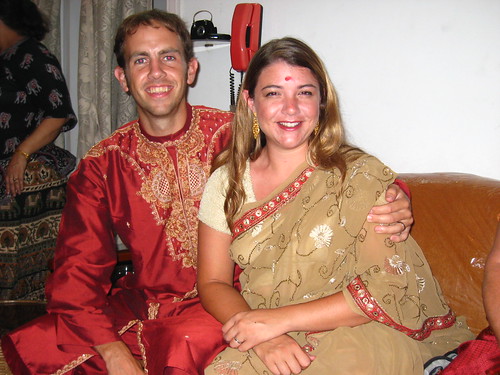I spent yesterday checking out the sites and the city of Hiroshima.
Ironically enough of the big cities I have visited in Japan I thought Hiroshima was actually one of the nicest. The Peace Memorial park in the middle of town is actually quite unusual for Japan, where large city parks are pretty non-existent except for castle grounds and temples. Also, the city is built across many islands on a river delta, so you often have a nice view down a river.
As for the memorials themselves, the A-Bomb dome in particular is probably the most touching monument or memorial that I have ever seen. The fact that is was created by the event that it is there to memorialize is a large part of that. Even though it was not created by some architect or team of designers, it is better then anything that anyone could have created.
It is obvious that the building itself was quite attractive when it was built, and the fact that it is half destroyed, with rubble strewn still inside it and around the perimeter lets you imagine what it must have been like to see it soon after its creation. But then resting on top, created by destruction as well is the metalwork of the dome, which at the distance that you see it from, appears to be perfect and untouched. The intricate ornament of curved metal sits on top, like it is rising from the ashes. Quite perfect.
The museum is quite well done as well, conveying a lot of the pain from that day as well as the moderate Japanese view of the situation, but stays away from wading too deep into all of the complex webs of blame that lie in war.
However, one similarity that I did find interesting between this and the right-wing war museum I visited earlier is the nuanced version of the endgame of WWII that seems pretty accepted in Japan. In the US we are pretty much told as kids that the point of the atomic bomb drop was to force and end to the war and avoid the even greater casualties that would occur during an invasion of mainland Japan.
In the version of events told in both museums the atomic bomb drop had more to do with the beginning of the cold war and posturing between the USSR and US. Basically the story goes that since the USSR had just declared war on Japan, the US feared that if both the USSR and US were to invade Japan administration of the territory after the war would have to be worked out with the Russians, so it was essential to end the war in Japan before they could get involved. Also, the US was motivated to drop the bomb to demonstrate its power to the USSR and justify the enormous costs of developing it.
This was backed up in the Hiroshima museum with excerpts of later declassified memos that discussed the need to maximise the apparent destructive impact and some memos discussing the possible congressional investigations that would take place regarding the cost of the program if it was never used. That being said, while some of this may be true, the Japanese did have ample opportunity to surrender earlier when it was obvious the war was lost. So once again the truth is probably somewhere in between.
The final thing that I found somewhat thought provoking is that for better or for worse, there is no equivalent place in the US where the damage and the history of war are so easy to feel around you. One has to wonder what the effect of the this is on the American mind (I am excluding I guess civil war battle fields, because, although horrific, they seem so far in the past, and were a meeting of armies, not a primarily civilian event). I also find it interesting that the only place that would be similar, ground-zero (although obviously not on the same scale as Hiroshima), we were so quick to pave over and clear from the earth. I guess the simple answer is money and the price of New York real estate. Or perhaps it is the American tendency to want to move on.

No comments:
Post a Comment